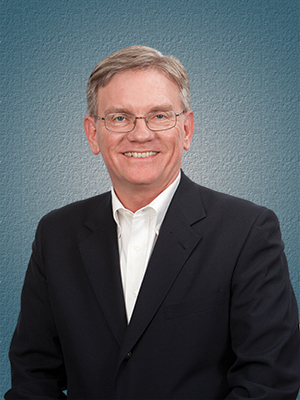
Kevin McLaughlin Photo by Vera LaMarche
If they can put a man on the moon, they can cure cancer. Perhaps you’ve heard that old saw comparing the NASA program that culminated in the 1969 lunar landing with efforts to defeat cancer. In 1969, such a view would have been understandable. Cancer’s complexity was barely understood then.
In his 1971 State of the Union address, President Richard M. Nixon said of cancer, “The time has come in America when the same kind of concentrated effort that split the atom and took man to the moon should be turned toward conquering this dread disease.” Later that year, Nixon signed the National Cancer Act, which directed federal efforts and dollars to cancer research.
Forty-five years and countless dollars later, cancer has not been conquered, although significant progress has been made against some types of cancer. So, in his 2016 State of the Union address, President Barack Obama echoed Nixon: “For the loved ones we’ve all lost, for the families we can still save, let’s make America the country that cures cancer once and for all.”
These are inspiring words from both presidents, and Vice President Joe Biden’s determination to focus on cancer for the rest of his term in office and beyond should not be doubted. But as the history of cancer science has shown, progress against the disease is often incremental and uneven, with significant advances against some conditions and barely any against others. Cancer itself is not one disease, researchers have discovered, but more than 200 different diseases. Broken down still further, every patient and every tumor is unique. How can we effectively treat such a complex illness?
In fact, there is no one way to treat cancer. As José Baselga, president of the American Association for Cancer Research (AACR) and physician-in-chief and chief medical officer at Memorial Sloan Kettering Cancer Center in New York City, put it in one media report, “A single approach to cancer ” … ain’t going to happen.” But Baselga also said in an AACR media release that “we have indeed reached an inflection point, where the number of discoveries that are being made at such an accelerated pace are saving lives and bringing enormous hope for cancer patients, even those with advanced disease.” Baselga singled out genomics, precision medicine and immuno-oncology as among the most promising new approaches to diagnosing and treating cancer.
Biden himself has targeted data-sharing initiatives like AACR Project GENIE, which is pooling patient data from seven large institutions, as key elements in the effort. In a blog post released on the night of Obama’s address, the vice president wrote that he plans to “break down silos and bring all the cancer fighters together—to work together, share information, and end cancer as we know it.”
Biden also wrote that a goal of his initiative is “to double the rate of progress. To make a decade worth of advances in five years.” Such progress will require what Baselga calls “a major new initiative in cancer science that supports and builds upon our basic science foundation while translating these exciting scientific discoveries into improved treatments for cancer patients.”
Improved treatments for all cancer patients will mean broadening access to advances that so far have benefited relatively few patients—in areas such as genomic profiling, precision treatments tailored to each person’s unique cancer mutations, and immunotherapy that enables the body’s immune system to attack cancer. The solutions to problems of access extend beyond science and research to public policy and financial issues that surround cancer care. These are concerns that an experienced and influential public figure like Joe Biden can shine his spotlight on.
Cancer Today magazine is free to cancer patients, survivors and caregivers who live in the U.S. Subscribe here to receive four issues per year.




